A new study conducted by the National Cancer Institute has shown that physical activity such as muscle-strengthening exercises are beneficial, but they only slightly extend a person’s lifespan. The study looked at the results from prostate, lung, colorectal and ovarian cancer screenings to see if there was a correlation between weight-lifting and mortality. The study looked at almost 100,000 American adults who indicated in a questionnaire whether they did or did not engage in weight-lifting regularly. They then tracked the mortality of those subjects for ten years, up through 2016. The average age at the outset was 71.3 years with equal numbers of male and female subjects.
The study showed that those subjects who did engage in weight lifting had a 9% overall lower mortality rate than those who did not. This difference was not present, however, in cases where death was the result of cancer.
Conclusion: Include weight lifting in your regular gym visits. Although doing so will not improve your chances of surviving cancer, it will improve both the quality and duration of your life.
This video explains the results of the study. Please have a look:
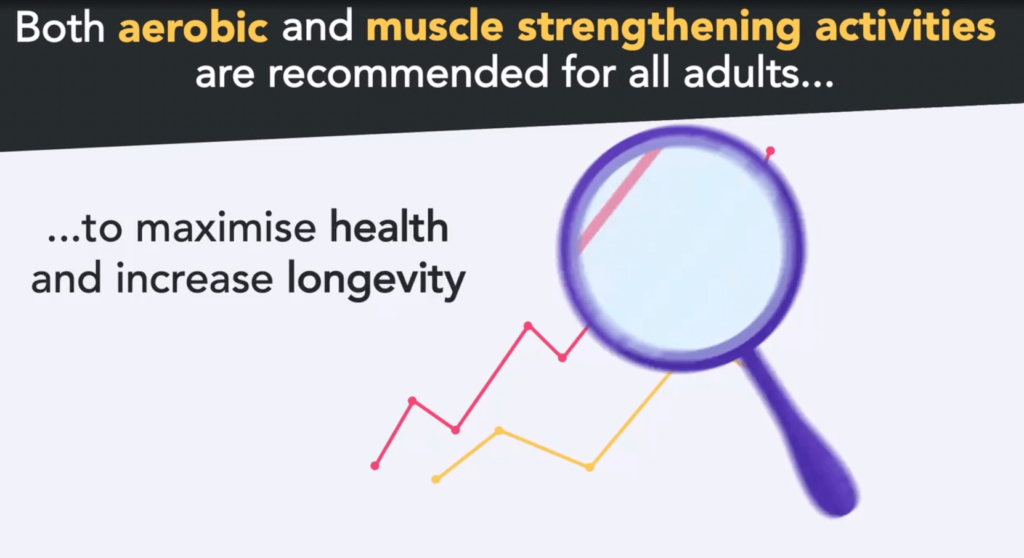
==================================================================
Source: British Journal of Sports Medicine • July 24, 2022
==================================================================

Coffee Linked to Reduced Heart Disease
Drinking ground and instant coffee—but interestingly, not decaffeinated coffee—was found to be associated with reduced risk of cardiac arrhythmia, including atrial fibrillation.
A recent Australian study is the first to look at different types of coffee and their impact on heart health.
“Daily coffee intake should not be discouraged by physicians but rather considered part of a healthy diet,” the researchers said. “This study supports the belief that coffee is safe and even potentially beneficial.”
So, should doctors advise patients to drink coffee?
“We do not prescribe coffee to patients, but for the majority who like coffee, they can be counseled that it is fine to take a few cups daily,” the researchers said.
Clear Cardiovascular Benefits
Roughly 450,000 participants (average age: 58; 55% women), all of whom were free of arrhythmias or any other type of cardiovascular disease, reported their level of daily coffee consumption. They also indicated which type of coffee (ground, instant, caffeine-free) they preferred.
The participants were then tracked for 12.5 years. During that time 6.2% of them died.
The study showed that drinking one to five cups per day of ground or instant caffeinated coffee resulted in a significant reduction in arrhythmia.
The lowest risk group were those who reported drinking 4 to 5 cups of ground caffeinated coffee per day.
Next lowest was the group that reported drinking 2 to 3 cups of instant caffeinated coffee per day.
- Coffee drinkers who consumed up to 5 cups per day of caffeinated coffee reported significant reduction in cardiovascular disease when compared with those who did not drink coffee at all.
- Similar findings were reported in the case of coronary heart disease(CHD). Participants who consumed up to 5 cups of caffeinated coffee per day reported a lower incidence of CHD.
- Coffee consumption at all levels was associated with significant reduction in the risk of congestive cardiac failure (CCF) and ischemic stroke. The lowest risks were observed in those who consumed 2 to 3 cups of caffeinated coffee per day.
- Death from any cause was significantly reduced for all coffee drinkers, with the greatest risk reduction seen with 2 to 3 cups of decaffeinated coffee per day.
“Coffee consumption is associated with cardiovascular benefits and should not be discontinued in those with underlying heart rhythm disorders or cardiovascular disease,” the researchers advised.
Why does drinking coffee reduce the risk of cardiovascular disease?
“Caffeine has anti-arrhythmic properties, hence the difference in effects of decaf vs full strength coffee on heart rhythm disorders,” Dr. Kistler, one of the research scientists explained. “Coffee also has vasodilatory effects and contains antioxidants that reduce stress and modulate metabolism.”
But these are merely theories. The actual mechanism at work remains a mystery.
“The explanation for improved survival with habitual coffee consumption remains unclear,” Kistler said.
Another benefit of coffee consumption, they found, is in the area of weight loss.
“Caffeine has a role in weight loss through inhibition of gut fatty acid absorption and increase in basal metabolic rate. Furthermore, coffee has been associated with a significantly lower incidence of type 2 diabetes mellitus,” Kistler added.
Is coffee truly the cause of these benefits?
One researcher questions the causality. “Does coffee make you healthy or do inherently healthier people consume coffee?” the researcher pointed out. “We need randomized controlled trials to fully understand the relationship between coffee and health before any recommendations can be made”
==================================================================
Source: Medscape Family Medicine • Coffee Linked to Reduced Cardiovascular Disease and Mortality by Megan Brooks • September 27, 2022
==================================================================

Dairy Products Are Bad For Your Heart — But Milk and Cheese Are Different
A new study from Norway has confirmed what was already known: Consuming dairy products by people with cardiovascular disease results in worse health outcomes. These include higher risk of death by stroke and other causes. The study however revealed that while there was no clear correlation between increased milk consumption and heart attack (myocardial infarction), the risk was increased when a person’s butter intake exceeded a threshold level of 2 grams per 1000 kcal per day. A person consuming 2500 kcal per day would need to only eat 1/20 of a stick of butter per day to reach this threshold.
There was also no connection shown between cheese consumption and and cardiovascular risk. The study suggests that different dairy products have different effects. The researchers speculated that the reason for the difference in the case of cheese is due to the presence of a milk fat globule membrane that is missing in milk.
“Some of the fermented dairy products may be less dangerous,” commented Andrew Freeman, MD, a cardiologist at the National Jewish Health Center in Denver, who was not involved with the study. “It’s possible to draw the conclusion that higher-fat dairy products—the number one source of saturated fat in our diet—are harmful to human health, and heart health in particular.”
Studies have found that the best clinical outcomes are found among those who ate a balanced diet including lots of fruits and vegetables and a modest amount of dairy, unprocessed red meat, and nuts and legumes. Other studies have reported that compared with eating no dairy whatsoever, eating at least two servings of it per day was linked with less heart disease and lower mortality.
Current U.S. dietary guidelines recommend a few servings of low-fat or fat-free dairy per day. There is no mention of specific products, however.
The study was based on 1,929 Norwegian patients with angina (80% men, mean age 62 years). All had undergone coronary angiography due to suspected coronary artery disease or aortic stenosis in 1999-2004. Use of preventive medications was high and included aspirin (90%), statins (90%), and beta-blockers (77%).
The study also found that people who ate more dairy tended to eat less meat, vegetables, fruit and berries, fish, and potatoes. These individuals also gained more calories from protein and less from fats (except saturated fats).
==================================================================
Source: The European Journal of Preventive Cardiology • MedPage Today by Nicole Lou • September 23, 2022
==================================================================

Top Ten Tips for How to Best Deal with COVID-19 These Days
1- Get a booster shot.
Start by getting vaccinated or getting a booster shot.
2- Mask when it’s easy.
Nobody wants to wear a mask all day long, so be strategic. I don’t normally wear a mask at work, but I wear one in a crowded meeting. You might want to mask in the grocery store; it’s a building full of strangers and COVID is probably present there, too. Mask at the doctor’s office or on your commute if you take public transit. Risk is cumulative, so every time you don a mask in a high-risk situation, you’re lowering your odds of catching the virus.
3- Mask when you travel.
Your risk for coming into contact with COVID goes up when you travel. Lower it by wearing a mask in the airport security line and in crowded terminals. Airplanes have effective ventilation systems, filtering air as often as every five minutes, but I still wear a mask. If it’s a long trip and you just don’t want to mask up, consider wearing one during the boarding and deplaning process, when the ventilation system may be off. And here’s a travel tip from virus experts: During the flight, turn the fan nozzle on and position it to blow on your face to help keep any wandering viral particles at bay.
4- Avoid crowds.
Whether you heed this advice or not will probably will depend on your overall risk. Young and healthy people who are vaccinated may choose to spend time in packed indoor areas. People who are older or who have an underlying health condition may opt for outdoor areas when it comes to dining, sporting events and concerts. And for indoor events such as going to the movies or theater, the cautious may still want to wear a high-quality mask.
5- Check community transmission levels.
Keeping track of case counts in your community can help guide your choices. In the United States, if you look at a map of transmission levels from the Centers for Disease Control and Prevention, be sure you use the drop-down menu to see “community transmission,” not “COVID-19 community levels,” which are an indicator of how hospitals are managing and not as relevant to personal decision-making.
6- Consider a Paxlovid plan.
People over 50 and those at high risk are eligible to take Paxlovid, a highly effective antiviral drug. You’ll need to start within five days of diagnosis or symptom onset, so it’s important to talk to your doctor and have a plan for getting a prescription quickly if you need it.
7- Think about your indoor air.
Adding a portable air cleaner to a space can effectively double the ventilation in the room. Ask your employer to provide portable air cleaners in office spaces and meeting rooms. Ask how often the filters are changed. You can also ask your employer what steps have been taken to improve indoor air quality at the office. Many workplaces have upgraded air filters to hospital-grade quality filters. (Ideally your workplace is using something called MERV-13 filters, but some systems can only handle MERV-11 filters).
8- Use home tests wisely.
While a negative home test means you’re probably not contagious, it’s not a guarantee you don’t have COVID. If you have cold symptoms or don’t feel well, especially if you’ve had a known exposure to the virus or have been in a higher-risk situation such as traveling or an indoor concert, you should stay away from others or wear a mask until your symptoms subside — even if your test is negative.
9- Stay home from work when you’re sick.
One of the great lessons of the pandemic is that we should not go to the office with the sniffles or a sore throat. Just stay home and Zoom in if you feel well enough to work.
10- Plan your life around the most vulnerable person in your orbit.
If you have regular close contact with someone who is older, has a chronic illness or is immunocompromised, you’ll need to take more precautions and be more vigilant about masking, testing and avoiding high-risk situations
==================================================================
Source: Special thanks to WCM patient, Jack Blanton for providing these guidelines.
==================================================================

If you are sounding a little hoarse and have a sore throat these symptoms might be caused not by a virus but by a valve—your lower esophageal sphincter. That’s the muscle that controls the passage between the esophagus and stomach, and when it doesn’t close completely, stomach acid and food flow back into the esophagus. The medical term for this backward flow of acid is acid reflux. When acid reflux produces chronic symptoms, it is known as gastroesophageal reflux disorder, or GERD. The most common symptom of GERD is heartburn—pain in the upper abdomen and chest.
Three conditions—poor clearance of food or acid from the esophagus, too much acid in the stomach, and delayed stomach emptying—contribute to acid reflux, says Dr. Jacqueline Wolf, a gastroenterologist and associate professor of medicine at Harvard Medical School and author of A Woman’s Guide to a Healthy Stomach: Taking Control of Your Digestive Health.
If you’ve been having repeated episodes of heartburn—or any other symptoms of acid reflux—you might consider doing the following:
1- Eat sparingly and slowly
If it fits into your schedule, you may want to try what is sometimes called “grazing”—eating small meals more frequently rather than three large meals daily.
2- Avoid certain foods
There are some foods that are more likely than others to trigger reflux, including mint, fatty foods, spicy foods, tomatoes, onions, garlic, coffee, tea, chocolate, and alcohol. If you eat any of these foods regularly, you might try eliminating them to see if doing so controls your reflux.
3- Don’t drink carbonated beverages
They make you burp, which sends acid into the esophagus. Drink flat water instead of sparkling water.
4- Stay up after eating
When you’re standing, or even sitting, gravity alone helps keeps acid in the stomach, where it belongs. Finish eating three hours before you go to bed. This means no naps after lunch, and no late suppers or midnight snacks.
5- Don’t move too fast
Avoid vigorous exercise for a couple of hours after eating. An after-dinner stroll is fine, but a more strenuous workout, especially if it involves bending over, can send acid into your esophagus.
6- Sleep on an incline
Ideally, your head should be 6 to 8 inches higher than your feet. You can achieve this by using “extra-tall” bed risers on the legs supporting the head of your bed.
7- Lose weight
Increased weight spreads the muscular structure that supports the lower esophageal sphincter, decreasing the pressure that holds the sphincter closed. This leads to reflux and heartburn.
8- If you smoke, quit
Nicotine may relax the lower esophageal sphincter.
9- Check your medications
Some—including postmenopausal estrogen, tricyclic antidepressants, and anti-inflammatory painkillers—can relax the sphincter, while others—particularly bisphosphonates like alendronate (Fosamax), ibandronate (Boniva), or risedronate (Actonel), which are taken to increase bone density—can irritate the esophagus.
If these steps aren’t effective or if you have severe pain or difficulty swallowing, stop in for an office visit. You may also need medication to control reflux even as you pursue lifestyle changes.
==================================================================
Source: Harvard Health Publishing • November 16, 2021
==================================================================
A Dose of Humor
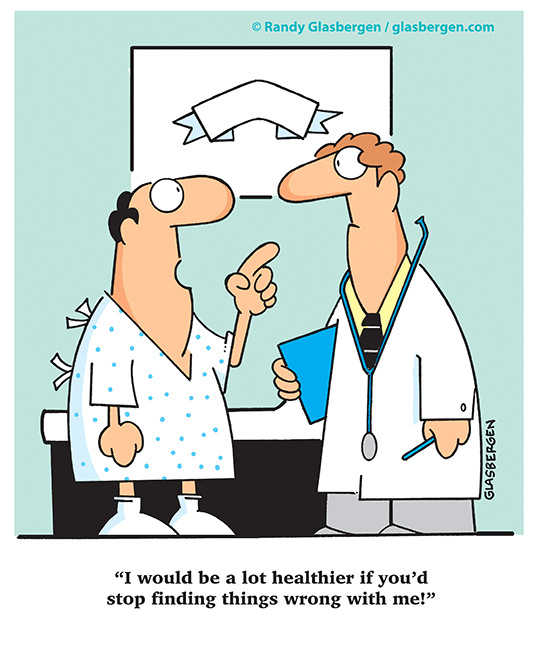
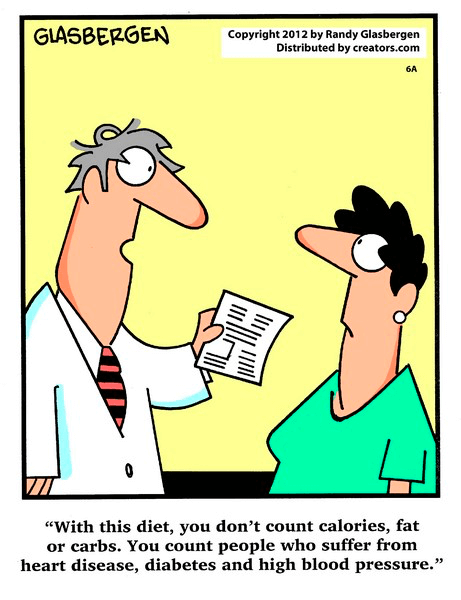
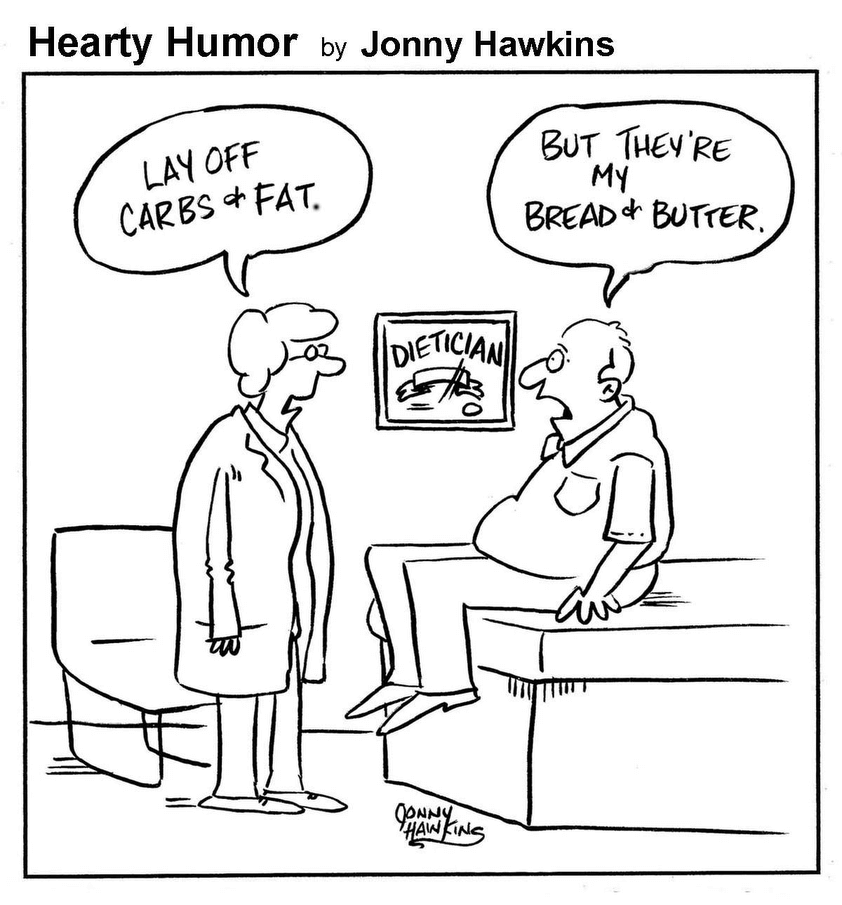
==================================================================
==================================================================
A Delicious Heart Healthy Entrée
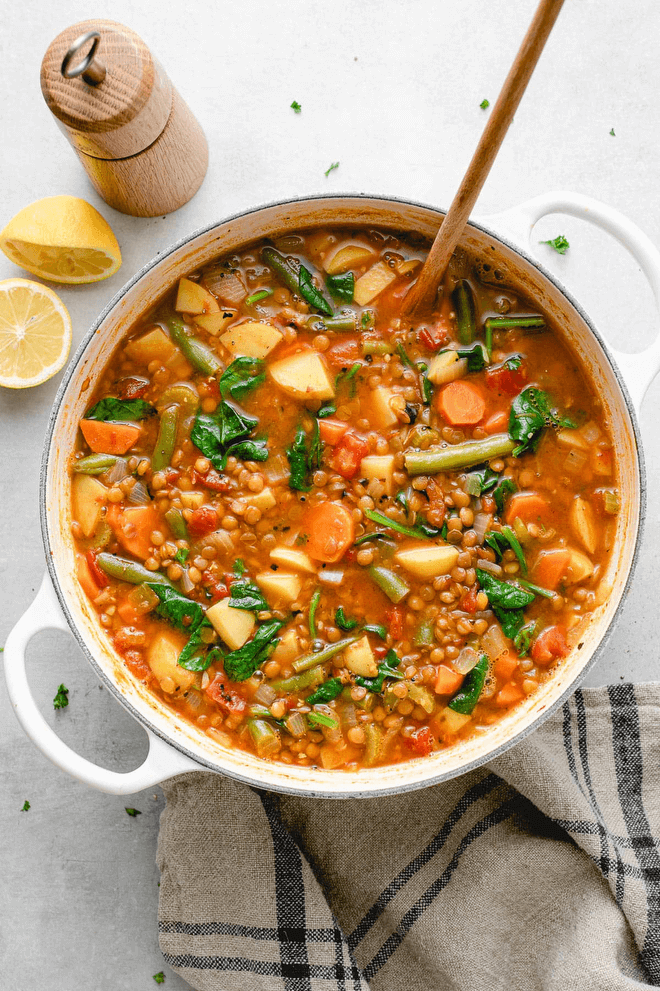
Hearty Vegan Lentil Soup
Super easy! It’s a one-pot recipe made with everyday ingredients and ready in about 45 from start to finish. You can even use frozen veggies for quicker prep time.
It’s healthy! Full of plant-based protein and healthy fiber for a well-balanced, nourishing and delicious soup. Plus, there’s an option to make it oil-free for a soup that’s heart-healthy and virtually fat-free.
Ingredients
- 1/4 cup water or 2 tablespoons olive oil
- 1 medium onion, diced
- 2 – 3 carrots (about 1 cup), diced
- 2 celery ribs, diced
- 3 cloves garlic, minced
- 1 cup (6oz.) green beans, cut into 1 inch pieces (fresh or frozen)
- 1 can (14oz) diced tomatoes with juices, or 2 – 3 roma tomatoes diced
- 1 lb. baby potatoes, diced
- 1 1/2 cups dried brown or green lentils
- 1 1/2 teaspoons paprika
- 1/2 teaspoon cumin
- 1/2 teaspoon curry
- 6 cups water or low-sodium broth, + more as needed
- 2 handfuls of baby spinach or kale
- juice of 1 lemon
- 1/2 cup parsley, chopped
- mineral salt & pepper, to taste
Preparation
- Sauté: In large dutch oven or pot, heat water/olive oil over medium heat. Add onion, carrots, celery, and garlic, saute for 5 minutes. Add the paprika, curry, and cumin, saute 1 minute, or until fragrant.
- Simmer: Add the green beans, tomatoes, potatoes, lentils, and liquids, give a good stir and bring to a boil, turn heat to low, cover askew and simmer for 30 – 35 minutes, stirring occasionally. Add greens: 5 minutes before soup is done, stir in the greens. Add more water if needed, maybe up to 1 cup. Add lemon juice and season with salt & pepper.
- Instant Pot: Add the ingredients, except the leafy greens and water/oil, to the bowl of your pressure cooker. Place the lid on the Instant Pot and set the release valve to the SEALED position. Press the MANUAL button and set the timer at 15 minutes. Once finished, set valve to quick release or let it release pressure on its own (takes about 20 minutes). Remove lid, stir in the greens. Season with salt & pepper taste.
- Slow Cooker: Add the ingredients, except the leafy greens and water/oil, to the bowl of your crock pot. Cover with lid. Set on HIGH for 4 – 5 hours or LOW for 8 – 10 hours. Add greens, let them wilt. Season with salt & pepper to taste.
- Serve: Ladle into soup bowls and top with a sprinkle of fresh chopped parsley and squeeze of lemon juice for an extra touch of brightness. Pairs great with homemade vegan cornbread, naan, or artisan bread.
- Store: Leftovers will keep in the refrigerator for 4 – 5 days. store covered. To keep longer, store in the freezer in freezer-safe containers for 2 – 3 months.
Tips
- Lentils: If using green lentils, they tend to take a little longer to cook, add another 5 – 10 minutes on the stovetop and 2 minutes in the Instant Pot.
- Herbs: For a different flavor profile, try substituting the cumin and curry for 1 teaspoon of thyme, Italian seasoning, or Herbes de Provence.
- Potato: Sub regular potatoes with sweet potatoes or butternut squash for variation.
- Night-Shade Free: Omit the diced tomatoes, paprika, and curry. In place of the cumin, try another flavor profile by adding 2 – 3 teaspoons of Italian seasoning, herbs de Provence, or any combination of thyme, rosemary, oregano, basil, etc.
Make this recipe prep-friendly by subbing most of the fresh veggies with 3 – 4 cups of a frozen vegetable medley. Saute the onion and garlic, add the frozen veggies with the lentils and continue as directed.
Prep Time: 15 min Cook Time: 40 min Total Time: 55 minutes
Yield: Serves 6
Category: Entree, Soup
Method: Stovetop, Instant Pot, Slow Cooker
Cuisine: Vegan
==================================================================
Source: The Simple Veganista • https://simple-veganista.com/hearty-lentil-soup/
==================================================================
